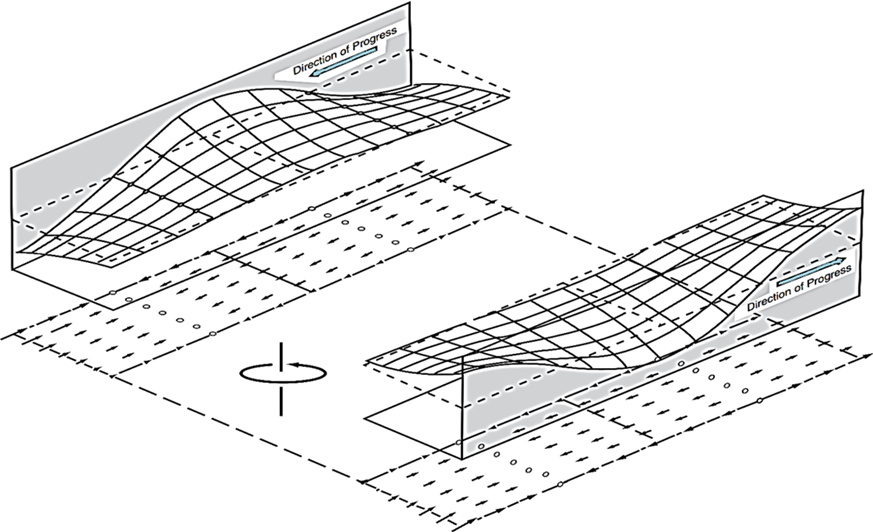

In each vertical plane parallel to the coast, the currents (shown by arrows) are entirely within the plane and are exactly the same as those for a long gravity wave in a nonrotating channel. However, the surface elevation varies exponentially with distance from the coast in order to give a geostrophic balance.
Kelvin waves move with the coast on their right in the Northern Hemisphere and on their left in the Southern Hemisphere. (From Mortimer, 1977.)
1Wang, B. (2002) Kelvin Waves. Shankar, M., Ed., Elsevier Science Ltd., 7p.
https://www.soest.hawaii.edu/MET/Faculty/bwang/bw/paper/wang_103.pdf